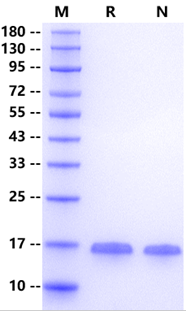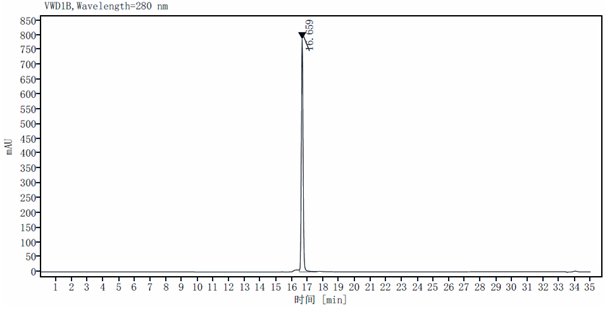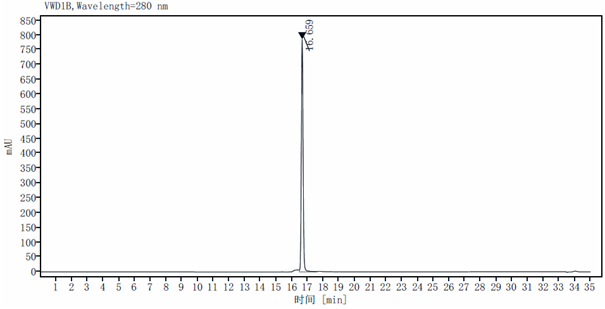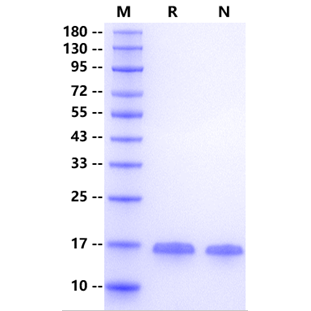Product Details
Product Details
Product Specification
| Species | Human |
| Accession | P12104 |
| Amino Acid Sequence | Met1-Asp132, with C-terminal 8*His MAFDSTWKVDRSENYDKFMEKMGVNIVKRKLAAHDNLKLTITQEGNKFTVKESSAFRNIEVVFELGVTFNYNLADGTELRGTWSLEGNKLIGKFKRTDNGNELNTVREIIGDELVQTYVYEGVEAKRIFKKDHHHHHHHH |
| Expression System | E.coli |
| Molecular Weight | 16.5kDa (Reducing) |
| Purity | >98% by SDS-PAGE & RP-HPLC |
| Endotoxin | <1EU/μg |
| Conjugation | Unconjugated |
| Tag | His Tag |
| Physical Appearance | Lyophilized Powder |
| Storage Buffer | 20mM Tris, 100mM NaCl, pH8.0 |
| Reconstitution | Reconstitute at 0.1-1mg/ml according to the size in ultrapure water after rapid centrifugation. |
| Stability & Storage | · 12 months from date of receipt, lyophilized powder stored at -20 to -80℃. · 3 months, -20 to -80℃ under sterile conditions after reconstitution. · 1 week, 2 to 8℃ under sterile conditions after reconstitution. · Please avoid repeated freeze-thaw cycles. |
Background
FABP2 is expressed solely in the small intestine, and may control development of the small intestine particularly in response to diet. FABP2 null animals were shown to be resistant to high fat diet induced obesity. FABP2 KO mice fed a high saturated fat low fiber diet showed reduced intestinal villi length and increased transit time, as well as decreased goblet cell density and paneth cell number. Epidemiological studies have long shown that the common Ala54Thr FABP2 polymorphism in humans is associated with metabolic syndrome. The Thr54 FABP was shown to have a slightly higher affinity than the Ala54 containing protein, and human fetal intestinal explants showed that subjects with the Thr54 polymorphism had increased levels of chylomicron secretion . Thus while the complete molecular mechanisms linking these biochemical and cellular observations to the population-based observations remain to be revealed, nutritional intervention strategies may prove helpful in treating metabolic syndrome in Ala54Thr carriers.
Picture
Picture
SDS-PAGE

2μg(R: reducing conditions, N: non-reducing conditions)
RP-HPLC




